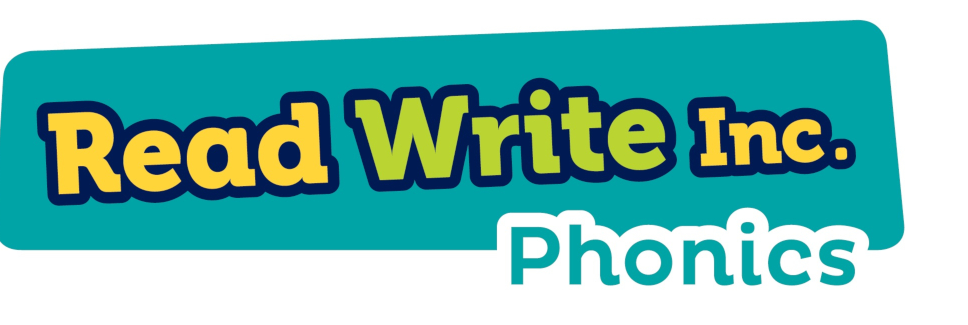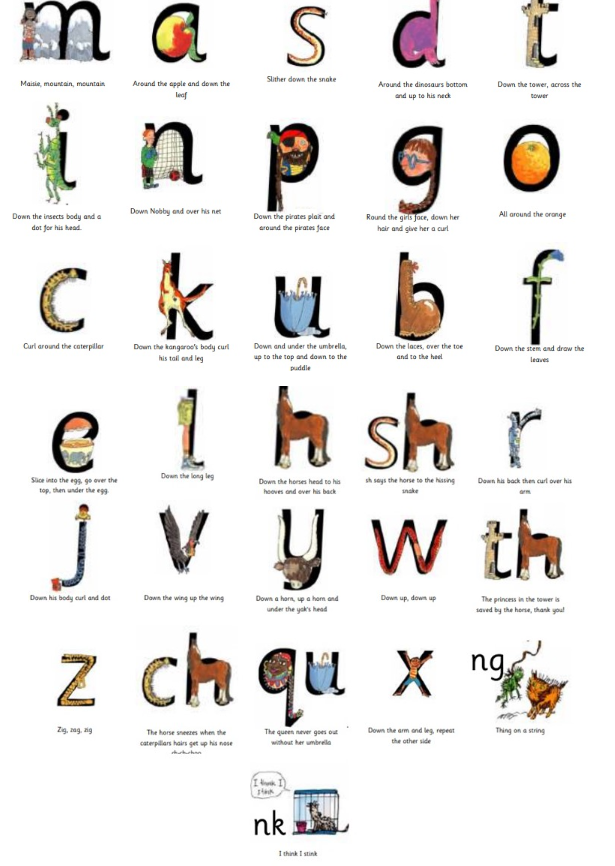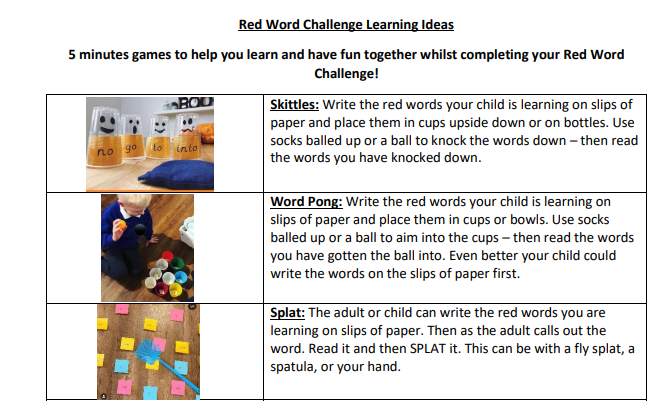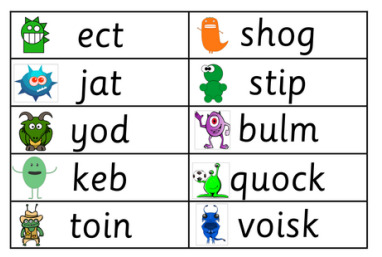English
Reading
Hadley Wood Primary school believes that reading is central to a child’s understanding of the school curriculum and is of vital importance in life. Fluent readers can access a full range of life experiences and can enjoy an amazing breadth of genres and writers.
We aim to develop a love and appreciation of reading which will stay with children for life. We hope to achieve this through careful planning and teaching using up-to-date strategies. We aim to use good reading materials and resources within English lessons and Whole-Class Reading sessions and to provide a breadth and range of reading material in school.
Early Reading
Early Reading at KS1

At Hadley Wood Primary School, we show fidelity to using Read Write Inc. (RWI), an inclusive synthetic phonic programme to teach our children to read. We have adopted this as the programme facilitates a graduated and tailored approach to learning basic sounds and letter formation before advancing to more complex sounds and reading for comprehension. The programme moves with integrity from learning to read to reading to learn.
RWI sessions occur each day as the continuity and pace of the programme is key to accelerating the progress of children’s reading development. This method of phonics teaching is both systematic and repetitive in order to embed learning.
The children work in small groups according to their confidence and competence. These groups are reconfigured on a regular basis in order to match the pace and the progress of each child; this reconfiguration also allows class teachers to identify where 1:1 or small group interventions may be required in order to meet the expectations of both the Phonics Check and the end of Key Stage 1.
Each week your child will be sent home with a RWI book at their phonetically decodable level, please practise the book daily with them and sign the reading record each day after each reading session. This enables the class teacher to best support the home school partnership with reading.
Aims and Objectives
The overarching objectives of the RWI programme are to teach pupils to:
- apply the skill of blending phonemes in order to read words
- segment words into their constituent phonemes in order to spell words
- learn that blending and segmenting words are reversible processes
- read high frequency words that do not conform to regular phonic patterns
- read texts and words that are within their phonic capabilities as early as possible
- decode texts effortlessly so that their focus can be used on reading to learn (comprehension)
Read Write Inc. Phonics
Children who read regularly or are read to regularly have the opportunity to open the doors to so many different worlds! More importantly, reading will give your child the tools to become independent life-long learners.
We can achieve this together through:
- using Read Write Inc. Phonics, a program to help to your child read at school
- encouraging children to develop a love of books by reading to them daily, at home and at school
- giving children access to a wide range of books at school and at home to read for pleasure
Reading
When using RWI to read the children will:
- learn 44 sounds and the corresponding letter/letter groups using simple prompts
- learn to read words using sound blending (Fred talk)
- read lively stories featuring words they have learnt to sound out
- show that they comprehend the stories by answering ‘Find It’ and ‘Prove It’
Talking
When using RWI the children will also work in pairs:
- to answer questions
- to take turns talking and listening to each other
- to give positive praise to each other
Key Skills
We use pure sounds (‘m’ not’ muh’,’s’ not ‘suh’, etc.) so that your child will be able to blend the sounds into words more easily.

*At school we use a puppet called Fred who is an expert on sounding out words! We call it, ‘Fred Talk’. E.g. m-o-p, c-a-t, m-a-n, sh-o-p, b-l-a-ck.
Set 1 Sounds
Set 1 Sounds are taught in the following order together with rhymes to help children form the letters correctly and instantly recognise sounds ready for blending. You can buy the Set 1 flashcards online, if you wish the practise this with your child at home.

Set 2 and 3 Sounds
The children are then taught Set 2 Sounds – the long vowels. When they are very confident with all of set 1 and 2 they are taught Set 3 Sounds.
The full list of Set 1, 2 and 3 sounds and rhymes, in the order they are taught, can be found here:
RWI Phonics Sounds Set 1 2 and 3
Red and Green Words:
Children use sound-blending (Fred Talk) to read short books will bring the home once they have read and discussed the book in class. Children will then be challenged to use their developing phonic knowledge to write short sentences.
Within all the books children will have red and green words to learn to help them to become speedy readers. Red words are words that are not easily decodable and challenge words to extend children’s vocabulary. Green words are linked to the sounds they have been learning and are easily decodable.
Fun Activities for Red Word Practise at home:
Here are some fun activities you can use to practise the red words in the front of your RWI books at home:

For more activities and information, click on the link below:
Nonsense Words (Alien Words)

As well as learning to read and blend real words children will have plenty of opportunities to apply their sound recognition skills on reading ‘nonsense words’. These words will also feature heavily in the Year One Phonics Screening check in the summer term.
The Year 1 Phonics Screening Check will take place in June,for children in Year 2, they will take the Phonics Screening Check in December 2024.
This check simply identifies the children who need extra help so they are given support by their school to improve their reading skills. They will then be able to retake the check so that schools can track pupils until they are able to decode.
Parent Information on RWI
For more information about the RWI programme at Hadley Wood Primary School and how to support your child at home with early reading, please click on the link to our school information video below:
For further information directly from the Ruth Miskin RWI website please click on the link below:
https://www.ruthmiskin.com/en/parents-copy-2/
Reading in Key Stage 2
Reading in KS2
Curriculum Aims:
It is our aim to allow children the opportunity to:
- experience reading in a variety of situations so that it becomes a pleasurable & productive experience.
- access a wide range of print materials, including all genres of fiction, nonfiction, poetry, plays & pupils own writing.
- progress to becoming selective in their choice of reading materials.
- be knowledgeable about the purpose and organisation of books.
- nurture a love of reading.
- learn to read confidently
- read to themselves or to others (peers and adults)
- read to a variety of audiences and to hear adults and children read to them.
- read regularly and to develop a respect for books.
- receive reading provision and support appropriate to individual ability.
- become aware of the link between reading and writing.
The classroom environment
Each classroom has a dedicated reading area which includes a variety of class books (fiction and non-Fiction) which the children can choose and read for pleasure. These appeal to different genders and also reluctant readers. A selection of banded books are also available in each class for use during independent reading.
The teaching of reading
There are two distinct but related processes involved in teaching children to read: learning to read words and developing language comprehension. Both are essential for learning to read. The school employs a daily Read, Write Inc programme to develop word recognition in Early Years, Key Stage 1 and Key Stage 2 where necessary. Whole class reading is promoted throughout Key Stage 2.
Phonics
Progression in phonics skills and knowledge are taught following the recommendations of the Read Write Inc programme as outlined above. Children will remain on the Read Write Inc programme until they have finished the scheme. Children in year 2 and above who would benefit from additional support with phonics, will continue to take part in daily RWI sessions.
Whole-Class Shared Reading
Shared Reading is where the teacher works with the children to model fluent, expressive reading, the use of effective reading strategies and to encourage response to texts. It can be a vehicle for both teaching children to read (decode) and for teaching children about reading, including comprehension. As a school, we prioritise whole-class reading on a daily basis. Each year group will spend a minimum of 30 minutes per daily promoting a love of reading, through structured reading lessons and listening to stories for pleasure.
Shared Reading enables children to access and enjoy rich, authentic texts which are slightly beyond their independent reading level. Sessions are generally planned in a sequence and involve re-reading for different purposes, with children using their developing skills and understanding as they become more familiar with the text.
Resources used for Shared Reading include fiction, poetry and non-fiction texts and excerpts from texts. Where children do not have access to individual texts, the shared text is enlarged to enable all children to see as well as to hear the text. This may be through the use of Big Books, ICT texts or smartscreens.
Additional Support
For some children, they may need time to consolidate the phonics that has been taught in Key Stage 1. These children will be identified at the end of Key Stage 1 through our pupil progress meetings and a personalised phonic programme will be put in place.
- children will be supported to choose an appropriate text matched to their individual reading ability, based on their book banding level. They may also choose a reading for pleasure book to enjoy at home in addition to this.
- whole-class lessons for application of reading and comprehension skills
- whole-class guided reading with adult and an independent reading exercise linked to taught objective
- Reading intervention group for children identified as not making the expected level of progress
Writing
At Hadley Wood we want to inspire the children’s love of literature by developing their skills in order to become thoughtful readers and creative writers. Our mission is to enable children to immerse themselves fully into a text. They will broaden their speech and language, widen their vocabulary and further their understanding of the different text types. Every child has the potential to be creative writers and confident readers. Through our Hadley Wood Approach to writing we want all children to be able to embrace literature in its many forms.
Hadley Wood Primary School implemented has created their own writing cycle based on research from the Education Endowment Fund, Talk4Writing strategies and the Ofsted Research Review into English.
Writing involves transcription (spelling and handwriting) and composition (articulating ideas and structuring them in speech, before writing them down). Therefore, we support pupils to develop capacity in their working memory to plan, compose and review effectively. This requires transcription skills to be secure, which we secure through discrete handwriting and spelling lessons.
In Reception and Year 1 children are supported with this through the RWI approach of “Hold a Sentence” skills, and as children gain confidence, this becomes dictated sentences and paragraphs throughout their time in school.
We encourage a love of writing through using a range of stimulus including literature from texts/books, videos and real-life experiences.
Over a writing cycle, children will have the opportunity to explore a high-quality written model of the outcome expected and the features of a genre. they will then develop grammar and vocabulary needed to create their own written piece.
The children will be explicitly taught how to use the grammar and language needed for the written piece through clear teacher modelling, class and individual feedback and opportunities for redrafting and editing their own work.
Example Writing Cycle:
|
Steps of the Writing Cycle |
|
Step 1: Hook the children into a new unit of writing and promote excitement. Look at the structure of a text through a high-quality example of the text type. |
|
Step 2: Appropriate grammar and punctuation explicit to the example text is introduced. |
|
Step 3: The children will have a lesson/s focused on oracy or drama |
|
Step 4: Innovation – the children adapt the model text with ideas of their own and plan their own version of the text |
|
Step 5: The children will write their own text |
|
Step 6: The children will complete an edit and redraft of the genre/piece |
|
Step 7: Independent Application - the children create their own text using the language and skills that the model taught them. |
|
Step 8: The children will complete an edit and redraft of the genre/piece |
This writing cycle takes place over a number of weeks with teachers adapting the teaching and learning to suit the needs of their class.
Hadley Wood Literature Spines
Each year group has a defined set of core texts. This literature spine is intended to offer our children a core bank of texts that ensures they experience a range of high quality texts and authors during their time at school. Teachers use these in a range of ways, as whole class texts to share, as part of their English writing lessons and in connection with our topics. Children are also encouraged to read these texts independently or share with parents at home. Our set texts also offer the opportunity to use ‘Talk for Writing’ techniques in encouraging children to ‘act out’ and bring alive texts they read to embed the language and structure of books. Please click on the download links below to find out more about our Literature Spine recommendations for each year group.
